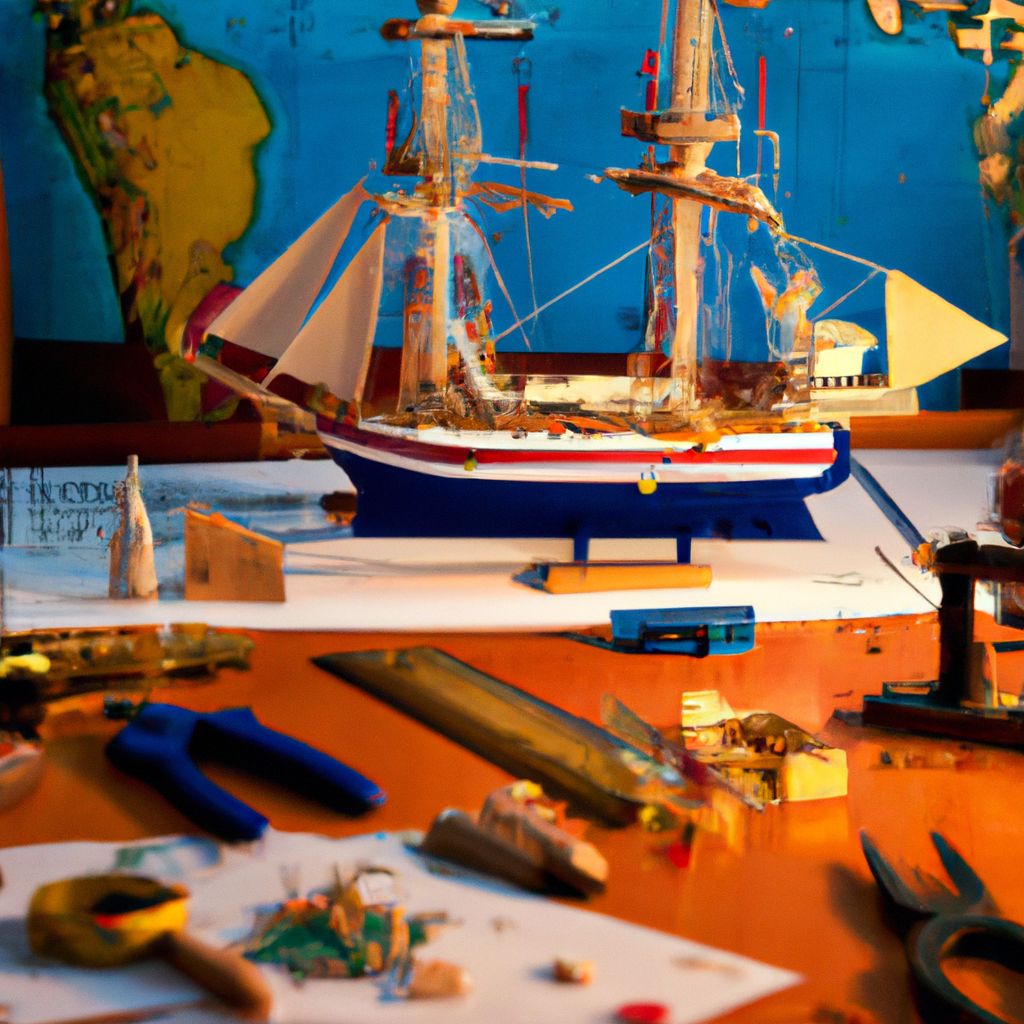Model ship building is an intricate and fascinating hobby that combines the love of maritime history, fine craftsmanship, and attention to detail. Whether you're a seasoned builder or a newcomer to this world, this essay will provide insights into the art of model ship building, discuss various types of model ships, share useful resources, and offer tips to make your shipbuilding experience smooth sailing.
Types of Model Ships
Before embarking on your shipbuilding journey, it's crucial to understand the different types of model ships available. These can be broadly classified into:
- Static models: These are display-only models that focus on the aesthetic aspect of shipbuilding. They're often made of wood or plastic and can range from simple to highly detailed reproductions.
- Radio-controlled (RC) models: These are functional, powered models that can be controlled remotely and are often used for racing or just for fun on water.
- Historical replicas: These are models of actual ships from history, meticulously crafted to replicate every detail of the original vessel.
- Kit models: These are pre-packaged model sets with all the necessary components, instructions, and plans for building a specific ship. They're ideal for beginners or those looking for a convenient option.
- Scratch-built models: These are built entirely from scratch using raw materials and plans, often by experienced model ship builders or those looking for a challenge and complete control over their project.
When selecting your model ship type, consider factors such as your skill level, budget, and the time you can dedicate to the project.
Model Ship Building Materials
Model ships can be made from various materials, each with its advantages and challenges. Some common materials include:
- Wood: A classic choice for model ship building, offering a warm, natural look. It can be easily shaped and carved, enabling detailed and intricate designs.
- Plastic: Lightweight, affordable, and easy to work with, plastic models are often available as kits and are popular among beginners.
- Resin: A durable material used for casting parts or creating small, detailed components. It's more complex to work with and typically reserved for experienced builders.
- Metal: Often used for smaller elements or fittings in model ships, metal can provide a realistic, sturdy finish for details like anchors, railings, and cannons.
Consider the material that best suits your skill level, the desired level of detail, and the type of model you're building.
"A ship is always referred to as 'she' because it costs so much to keep one in paint and powder." – Chester W. Nimitz
Essential Tools for Model Ship Building
To set sail on your model ship project, you'll need a well-stocked toolbox. Some essential tools include:
- Cutting tools: Hobby knives, saws, and scissors for cutting and shaping materials.
- Measuring tools: Rulers, calipers, and compasses for accurate measurements and angles.
- Adhesives: Wood glue, super glue, and epoxy for bonding various materials.
- Clamps and vices: For holding parts together while gluing or working on them.
- Sanding tools: Sandpaper, files, and sanding blocks for smoothing surfaces and edges.
- Painting supplies: Brushes, airbrushes, and paint trays for applying color and finishes.
As you gain experience, you may want to invest in specialized tools, such as a Dremel rotary tool for intricate carving and shaping or a plank bender for creating curved hull planks.
Building Your First Model Ship
Starting your first model ship project can be both exciting and daunting. Here are some tips to help you set sail on your shipbuilding journey:
- Choose a suitable model: For beginners, it's best to start with a simpler kit model that includes detailed instructions and pre-cut parts.
- Research: Read up on the ship you're building and study the plans to familiarize yourself with the parts, terminology, and assembly process.
- Gather your tools and materials: Ensure you have all the necessary tools and materials before starting to avoid delays and frustration.
- Take your time: Model ship building is a detailed and time-consuming process. Work at your own pace and take breaks when needed to maintain focus and accuracy.
- Seek help and support: Join online forums, social media groups, or local clubs to connect with fellow shipbuilders, ask questions, and share your progress.

In Conclusion
Model ship building is a rewarding hobby that allows you to explore maritime history, hone your craftsmanship, and create stunning, detailed replicas of the world's most iconic vessels. By understanding the different types of model ships, selecting the right materials, and equipping yourself with the essential tools, you'll be well on your way to navigating the world of model ship building with confidence and enjoyment.


